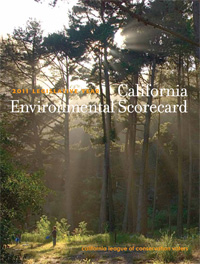Get the Beach Report Card app
APP UPDATE: We are currently experiencing some issues with the Beach Report Card App due to opperating system changes. In the meantime, please go directly to beachreportcard.org for all your healthy beach reporting needs!


Today’s guest blogger is Amanda Griesbach, Heal the Bay’s beach water quality scientist
You wake up with a stomachache, your eye is goopy and you feel just plain blah. It bums you out to think it could be that you’d just gone swimming in the ocean. The more you think about it, you realize you went in the water just after a rain and chances are you were exposed to increased bacteria concentrations.
As part of our work to protect the public from these types of illnesses and more, this fall Heal the Bay took the opportunity to participate in a statewide Source Identification Protocol Project (SIPP), which focuses on understanding chronic pollution problems observed at some of the state’s most infamous beaches.
The state of California is required (under AB411, passed in 1997) to monitor fecal indicator bacteria (FIB) on a weekly basis at coastal beaches with more than 50,000 annual visitors and adjacent to a flowing storm drain. After beach water quality monitoring agencies collect and analyze samples, they post appropriate health warnings to protect public health.
Meanwhile, you’ve got that goopy eye and your stomach aches after swimming in sewage contaminated waters, so you know some of the health risks, which also include nausea, vomiting, skin rashes, and respiratory illness.
However, despite over $100 million of state Clean Beach Initiative (CBI) money spent towards implementing improvement projects at persistently polluted beaches, a handful of these locations such as Dockweiler Beach in Playa del Rey and Cabrillo Beach in San Pedro, keep us scratching our heads as to the cause of high bacteria levels. If we can identify the sources of fecal pollution at their origins, CBI funds could be spent more efficiently towards pollution abatement, and ultimately improve public health protection. Furthermore, there’s a need to demonstrate, and then transfer, the most effective source tracking techniques to beach water quality monitoring agencies.
The State Water Resources Control Board is funding the SIPP project through Prop. 84 capital funds, in hopes to remediate identified fecal pollution sources and thereby decrease the number of beach contamination events. The core SIPP project groups include: Stanford University, the University of California Santa Barbara, the University of California Los Angeles, and the Southern California Coastal Water Research Project (SCCWRP).
Potential SIPP beaches are identified by exceedances rates greater than 15% during the AB411 criteria over the last three years. Beaches selected for the project will undergo rigorous sampling, as well as DNA analyses in order to identify potential pollution sources including humans, sea gulls, cows, and dogs.
Currently, Heal the Bay is working with Dr. Jenny Jay, the SIPP lead for Los Angeles at UCLA’s Civil and Environmental Engineering department, to investigate potential sources of bacteria at Topanga Beach, a location no stranger to receiving poor grades on Heal the Bay’s Beach Report Card (BRC). This is only one beach location being considered for the SIPP project. Other beaches being considered for the project include Baker Beach in San Francisco, Arroyo Burro in Santa Barbara, and Mother’s Beach in Marina del Rey.
Though the entire SIPP project isn’t scheduled for completion until 2013, Heal the Bay looks forward to supporting the SIPP team’s rigorous efforts in identifying persistent pollution sources in order to keep our beaches clean and improve public health.
Public health protection is central to Heal the Bay’s mission and is an issue members of the Heal the Bay staff are extremely passionate about. The reason is simple: A day at the beach should never make you sick.





